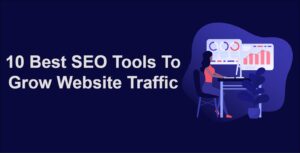Keywords play a pivotal role in driving organic traffic to your website. They serve as the bridge between what people are searching for and the content you offer. To harness the full potential of keywords, it’s essential to conduct thorough keyword research, and that’s where the Google Keyword Planner comes into play.
In this guide, we will walk you through the process of using the Google Keyword Planner to perform effective keyword research and boost your website’s SEO.
In the ever-evolving world of SEO, staying ahead of the competition requires data-driven decisions. Google Keyword Planner empowers you with insights that guide your keyword strategy, helping you target the right audience and drive organic traffic to your website.
By understanding its features, utilizing filtering options, and analyzing keyword performance, you can elevate your website’s search engine visibility and achieve your SEO goals. Remember, effective keyword research is an ongoing process that evolves as search trends shift, so continue to refine your strategy for optimal results.
Understanding Google Keyword Planner: What Is It?
What Is Google Keyword Planner?
Google Keyword Planner is a powerful tool provided by Google within its Google Ads platform. Initially designed for advertisers to plan and optimize their ad campaigns, it has become an indispensable resource for SEO professionals and content creators. The tool offers valuable insights into keyword trends, search volume, competition, and related keywords, making it a crucial asset for anyone looking to optimize their website for search engines.
How Does Google Keyword Planner Work?
Google Keyword Planner works by allowing you to input specific keywords, phrases, or even your website’s URL, and it provides you with a range of relevant data to inform your keyword strategy. This data includes average monthly search volume, competition level, suggested bid for ads, and a list of related keywords that users frequently search for.
Using Google Keyword Planner: Step-by-Step Guide
Step 1: Accessing Google Keyword Planner
To get started, you need a Google Ads account. If you don’t have one, you can create it for free. Once you’re logged in, navigate to the “Tools & Settings” tab and select “Keyword Planner.”
Step 2: Choosing a Keyword or Phrase
In the Keyword Planner, you have two options: “Discover new keywords” and “Get search volume and forecasts.” Choose “Discover new keywords” to find keyword ideas related to your business or niche.
Step 2.1: Entering Keywords
Enter a broad keyword or phrase related to your content or business. For instance, if you’re in the fitness industry, you might start with “weight loss tips.”
Step 3: Refining Your Search
Step 3.1: Filtering Options
Google Keyword Planner offers various filtering options to refine your search results. You can filter by location, language, date range, and more. For localized businesses, adjusting location settings can provide more relevant data.
Step 3.2: Keyword Options
Under the “Keyword options” section, you can choose to include or exclude certain terms from your results. This helps you narrow down your keyword list to the most relevant terms.
Step 4: Exploring Keyword Ideas
Once you’ve refined your search, the tool will present you with a list of keyword ideas. These ideas are organized by relevance and can provide insights into search volume and competition for each keyword.
Step 4.1: Keyword Metrics
Pay attention to the “Avg. monthly searches” and “Competition” columns. High search volume combined with low competition indicates a potential opportunity to target that keyword.
Step 4.2: Keyword Trends
Google Keyword Planner also provides insights into keyword trends over time. This data can help you identify seasonal or emerging keywords that you might want to target.
Step 5: Analyzing Keyword Performance
After selecting a list of potential keywords, you can analyze their performance using the “Get search volume and forecasts” option. This feature provides more in-depth data on search volume, competition, and suggested bids for ads.
Best Practices for Using Google Keyword Planner
Understand Audience
Before you dive into keyword research, it’s crucial to understand your target audience’s search intent. Consider what questions they might be asking and what phrases they’re likely to use.
Focus on Relevance
Choose keywords that are highly relevant to your content. Relevance is key to attracting the right audience and improving your website’s SEO.
Balance Search Volume and Competition
While high search volume is desirable, it often comes with high competition. Finding a balance between search volume and competition is essential for targeting achievable keywords.
Long-Tail Keywords
Don’t overlook long-tail keywords – longer and more specific phrases. While they may have lower search volume, they often have higher conversion rates due to their specificity.
Regularly Update Your Keyword Strategy
Keyword trends change over time, so it’s essential to revisit your keyword strategy regularly. Keep up with industry changes and adapt your content accordingly.





